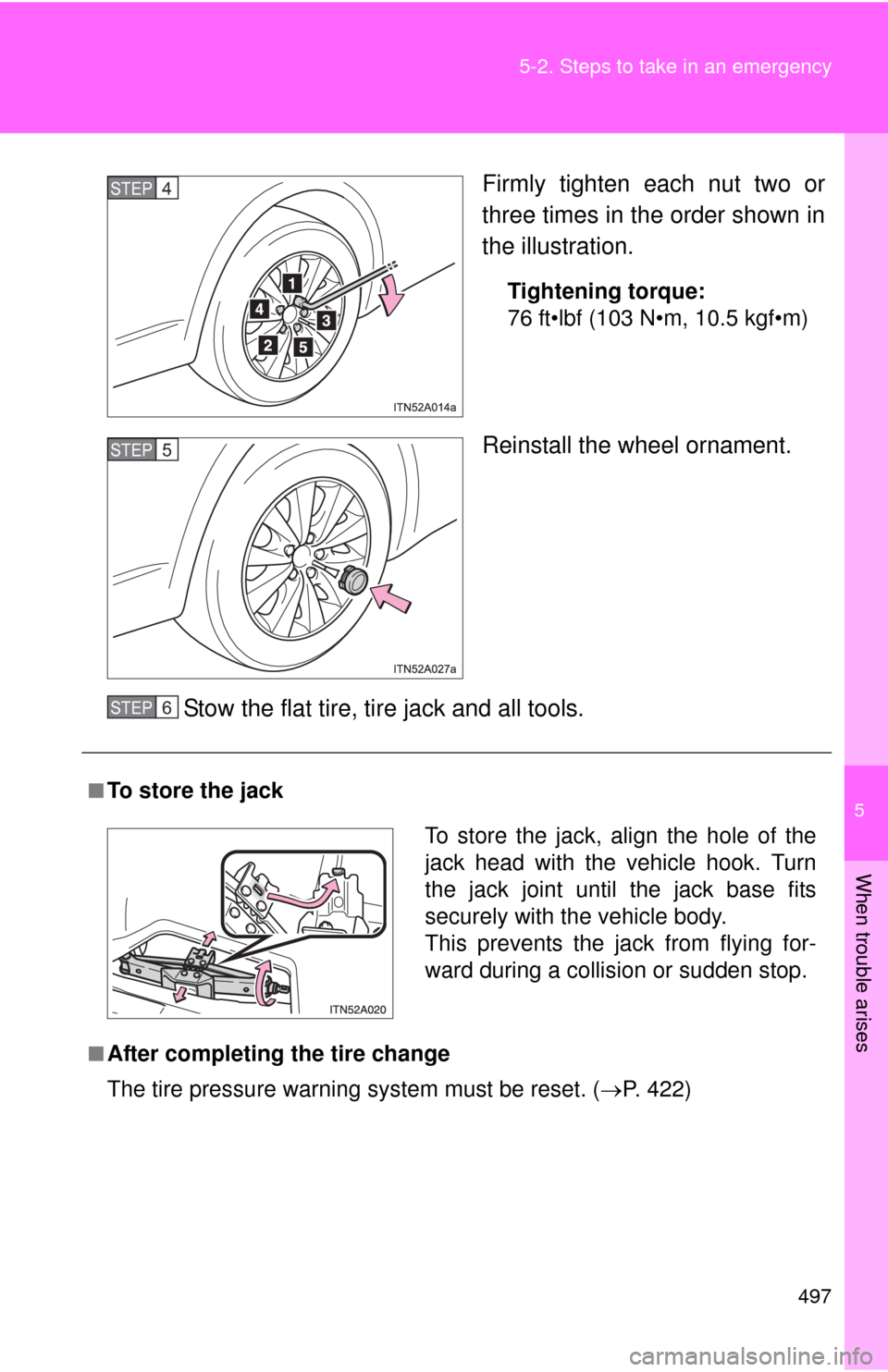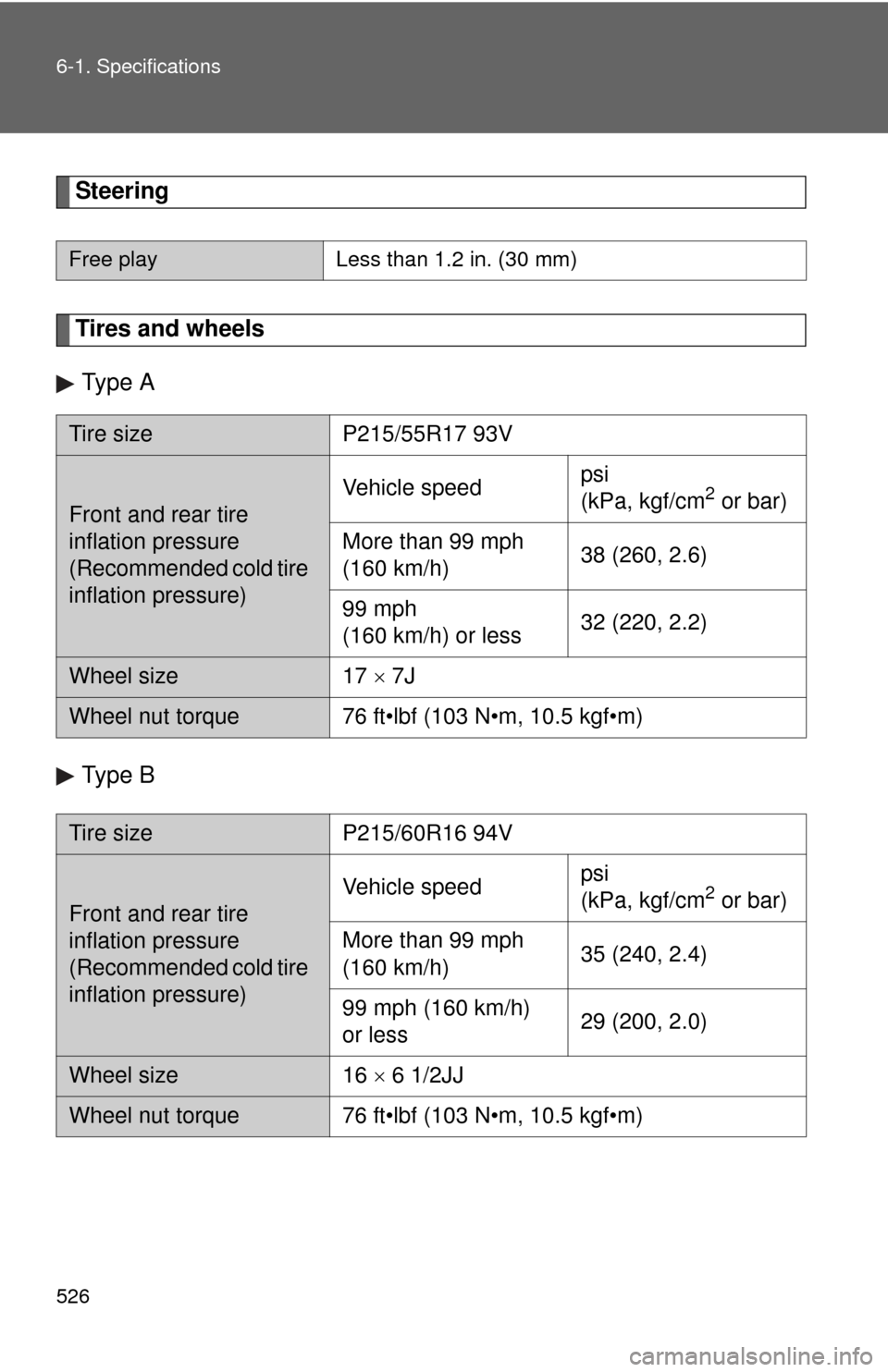torque TOYOTA AVALON 2012 XX40 / 4.G Owners Manual
[x] Cancel search | Manufacturer: TOYOTA, Model Year: 2012, Model line: AVALON, Model: TOYOTA AVALON 2012 XX40 / 4.GPages: 580, PDF Size: 9.33 MB
Page 151 of 580

151
2-1. Driving procedures
2
When driving
CAUTION
■
When braking the vehicle
●When the brakes are wet, drive more cautiously.
Braking distance increases when the brakes are wet, and may cause one
side of the vehicle to brake differently than the other side. Also the parking
brake may not securely hold the vehicle.
● If the power brake assist function does not operate, do not follow other
vehicles closely and avoid downhill or sharp turns that require making.
In this case, braking is still possible, but it will require more force on the
pedal than usual. Braking distance may also increase.
● Do not pump the brake pedal if the engine stalls.
Each push on the pedal uses up the reserve for the power-assisted
brakes.
● The brake system consists of 2 individual hydraulic systems: if one of the
systems fails, the other will still operate. In this case, the brake pedal
should be depressed more firmly than usual and braking distance
becomes longer.
Do not drive your vehicle with only a single brake system. Have your
brakes fixed immediately.
NOTICE
■While driving the vehicle
●Do not depress the accelerator and brake pedals at the same time during
driving. If the brake pedal is depressed while driving with the accelerator
pedal depressed, driving torque may be restrained.
● Do not use the accelerator pedal or depress accelerator and brake pedals
at the same time to hold the vehicle on a hill.
Page 497 of 580

5
When trouble arises
497
5-2. Steps to take in an emergency
Firmly tighten each nut two or
three times in the order shown in
the illustration.
Tightening torque:
76 ft•lbf (103 N•m, 10.5 kgf•m)
Reinstall the wheel ornament.
Stow the flat tire, tire jack and all tools.
STEP4
STEP5
■To store the jack
■After completing the tire change
The tire pressure warning system must be reset. (P. 422)
STEP6
To store the jack, align the hole of the
jack head with the vehicle hook. Turn
the jack joint until the jack base fits
securely with the vehicle body.
This prevents the jack from flying for-
ward during a collisio n or sudden stop.
Page 499 of 580

5
When trouble arises
499
5-2. Steps to take in an emergency
CAUTION
■Replacing a flat tire
Observe the following precautions to reduce the risk of death or serious
injury.
●Have the wheel nuts tightened with a torque wrench to 76 ft•lbf (103
N•m, 10.5 kgf•m) as soon as possible after changing wheels.
Failure to follow these precautions could cause the nuts to loosen and
the wheels may fall off, which could lead to an accident causing death
or serious injury.
■When installing the wheel nuts
Be sure to install the wheel nuts with the tapered end facing inward.
(
P. 435)
Page 526 of 580

526 6-1. Specifications
Steering
Tires and wheelsType A
Type B
Free playLess than 1.2 in. (30 mm)
Tire sizeP215/55R17 93V
Front and rear tire
inflation pressure
(Recommended cold tire
inflation pressure) Vehicle speed
psi
(kPa, kgf/cm
2 or bar)
More than 99 mph
(160 km/h) 38 (260, 2.6)
99 mph
(160 km/h) or less 32 (220, 2.2)
Wheel size
17 7J
Wheel nut torque 76 ft•lbf (103 N•m, 10.5 kgf•m)
Tire sizeP215/60R16 94V
Front and rear tire
inflation pressure
(Recommended cold tire
inflation pressure) Vehicle speed
psi
(kPa, kgf/cm
2 or bar)
More than 99 mph
(160 km/h) 35 (240, 2.4)
99 mph (160 km/h)
or less 29 (200, 2.0)
Wheel size
16 6 1/2JJ
Wheel nut torque 76 ft•lbf (103 N•m, 10.5 kgf•m)